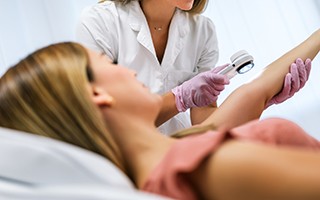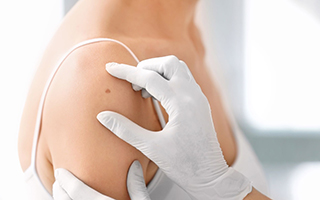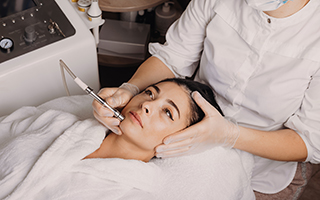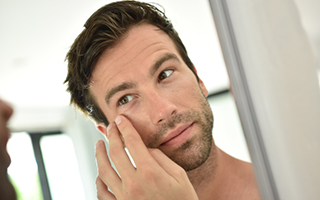Keratosis Pilaris
Reduce Discolored, Rough Bumps on the Skin for Bryn Mawr, Newtown Square, Philadelphia, and the Main Line
- Home
- Medical Dermatology
- DERMATOLOGY CONDITIONS
- Keratosis Pilaris
Bryn Mawr Skin & Cancer Institute’s dermatologists offer treatments for a range of common dermatological conditions, such as keratosis pilaris. Bryn Mawr, Newtown Square, Main Line, and Philadelphia area patients may deal with this unpleasant but harmless condition, which is often called “chicken skin” and thought of as a “normal” variant of the skin.
Bryn Mawr Skin & Cancer Institute treats common skin conditions like keratosis pilaris. To schedule an appointment, Please BOOK ONLINE, call 610.525.5028, or Contact Us.
What Causes Keratosis Pilaris?
The tiny, “pimple like” bumps that result from keratosis pilaris occur when the openings of hair follicles become blocked with dead skin when the cells don’t adequately flake off. It is caused by an excess of a hair protein called keratin. It is believed that other skin conditions like atopic dermatitis and genetic diseases may be linked to this accumulation of keratin that triggers keratosis pilaris, though the exact cause has yet to be determined.
What Are the Symptoms of Keratosis Pilaris?
Keratosis pilaris causes dry, rough patches and tiny, sandpapery bumps that look similar to goosebumps, which is why it is often called “chicken skin.” These bumps can be different colors—ranging from flesh-colored to white, red, pink, brown, or black—depending on the skin tone of the patient. Keratosis pilaris is typically asymptomatic but may cause minor itching and irritation.
There may be dryness and a slight redness of the skin surrounding the bumps. The bumps usually form on the upper arms, thighs, cheeks, or buttocks, though anywhere on the skin where there are hair follicles may be affected. The discolored skin bumps usually become worse when there are seasonal changes during the winter months that lead to low humidity and dry skin. Hormonal changes during puberty or pregnancy may also trigger keratosis pilaris breakouts. This condition is not contagious.
What Are the Risk Factors for Keratosis Pilaris?
Although any age demographic can be affected, this skin condition occurs more frequently in young children and teenagers. It is more common in women. People who have dry skin, eczema, ichthyosis, hay fever, obesity, fair skin, or Celtic ancestry are the most likely to develop this condition.
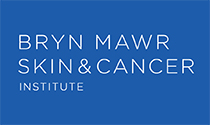
Meet Our Dermatologists &
Certified Physician Assistants
Our board-certified dermatologists & PA-Cs are dedicated to detecting and treating skin cancers. We treat the full spectrum of skin diseases. Our Mohs and Plastic Surgery practices are integrated, and offer patients the most advanced skin cancer treatment, delivering superior outcomes.
Treatment Options for Keratosis Pilaris
Most cases of keratosis pilaris spontaneously resolve by age 30. However, there are steps that patients can take to enhance their skin’s appearance, such as using moisturizers to alleviate the dryness and applying retinol, urea, and lactic acid creams to help remove the dead skin that’s clogging the pores.
Cosmetic treatments such as microdermabrasion and chemical peels help to exfoliate the retained skin cells. Daily tips to help manage keratosis pilaris include taking shorter showers or baths, washing with lukewarm instead of hot water, using a humidifier, and moisturizing every day.
It may take several months before patients notice significant improvements. While there is no way to prevent keratosis pilaris, good management strategies will provide adequate control of this condition. The best way to determine which treatments will work for you is to schedule a consultation.
To find out what you can do to manage signs and symptoms of keratosis pilaris, schedule an appointment in Bryn Mawr or Newtown Square with Bryn Mawr Skin & Cancer Institute. Please BOOK ONLINE, call 610.525.5028, or Contact Us.




